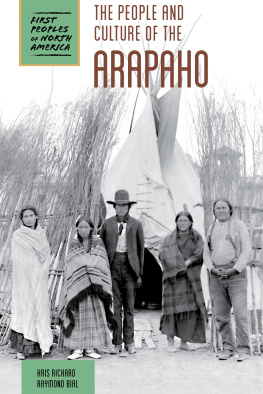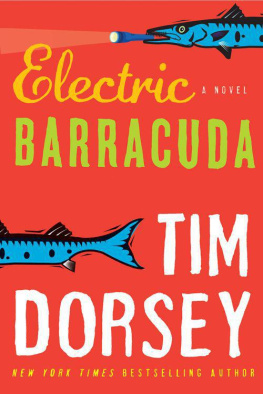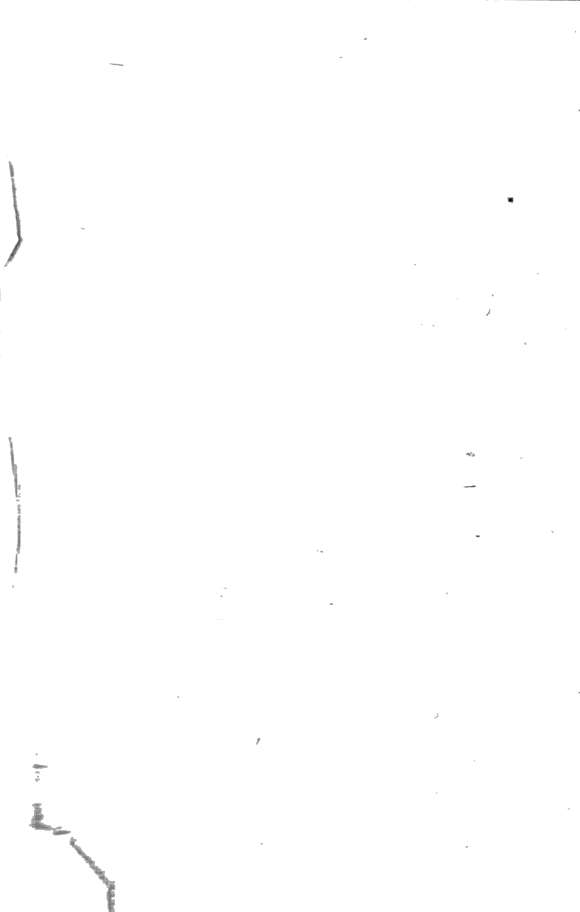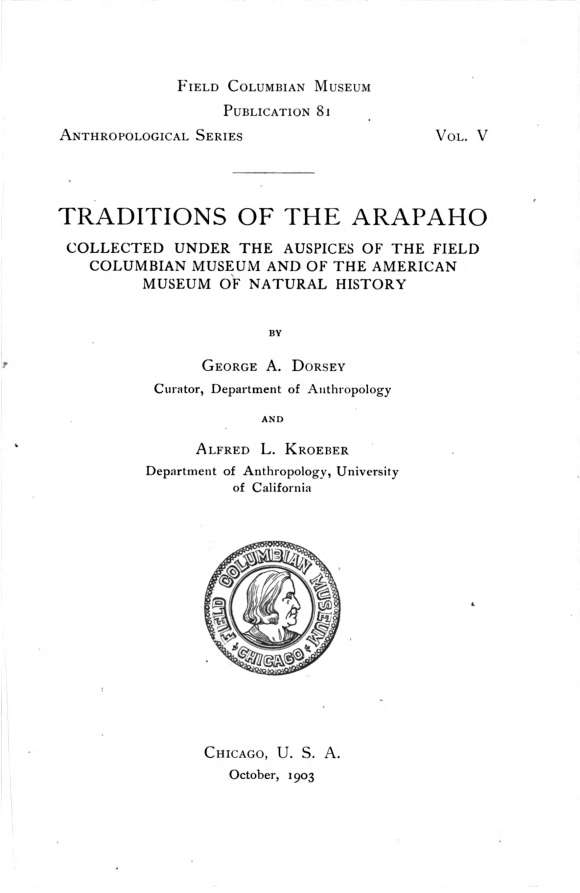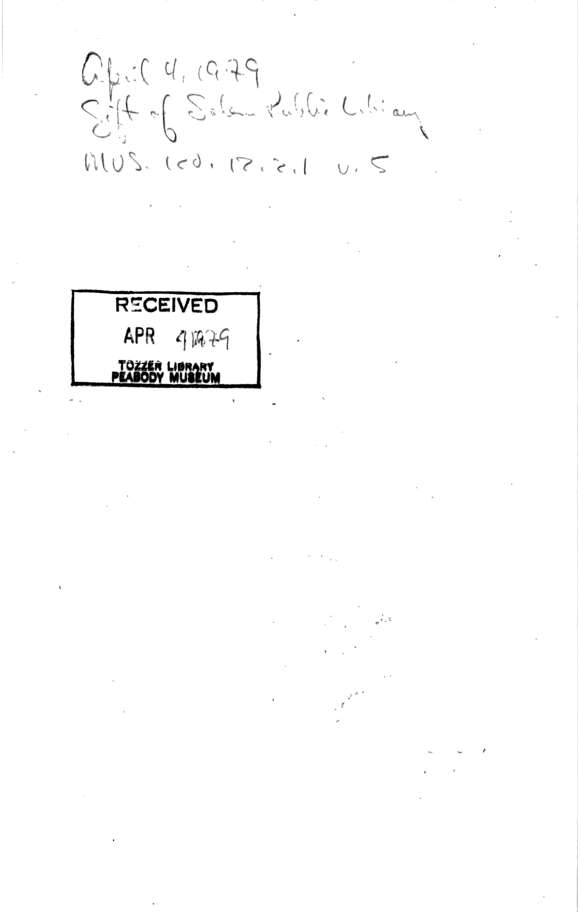Traditions of the Arapaho
George Amos Dorsey
Google Book Search
This is a digital copy of a book that was preserved for generations on library shelves before it was carefully scanned by Google as part of a project to make the world's books discoverable online. See the back of the book for detailed information.
INTRODUCTION.
The following traditions are the result of independent research among the Arapaho by George A. Dorsey and Alfred L. Kroeber. The traditions which are followed by the letter "D" were obtained by the former in behalf of the Field Columbian Museum among the Southern Arapaho of Oklahoma; those followed by the letter "K" were collected by the latter among the Southern Arapaho of Oklahoma and the Northern Arapaho of Wyoming, for the American Museum of Natural History as part of the Mrs. Morris K. Jesup Expedition. Each author is entirely responsible for his own material including abstracts and notes. The greater part of the material recorded by both authors was obtained through Cleaver. Warden, a full-blood. Certain traditions forming part of the research of the senior author among the Arapaho have been incorporated in a paper devoted to the Sun-dance. The contribution of the junior author was originally intended to be issued as Part II. of "The Arapaho" in Vol. XVIII. of the Bulletin of the American Museum of Natural History.
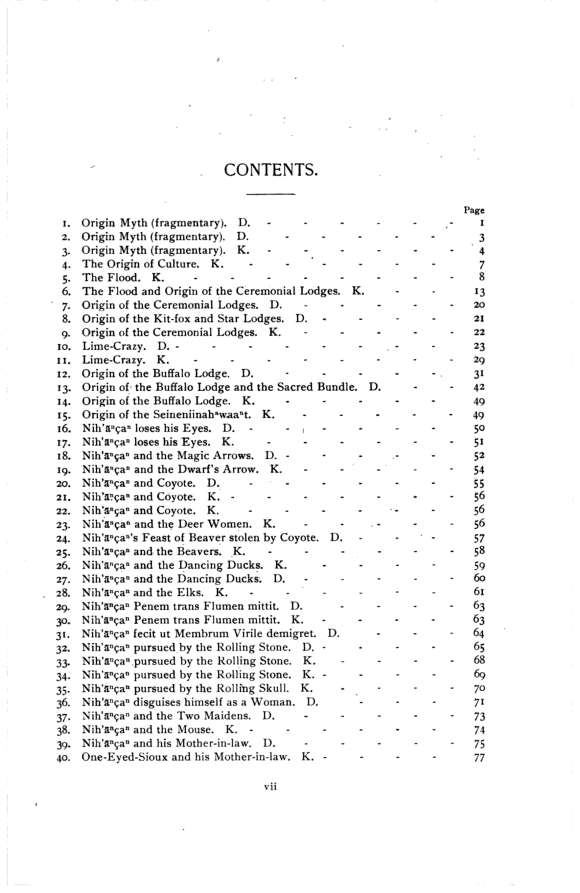
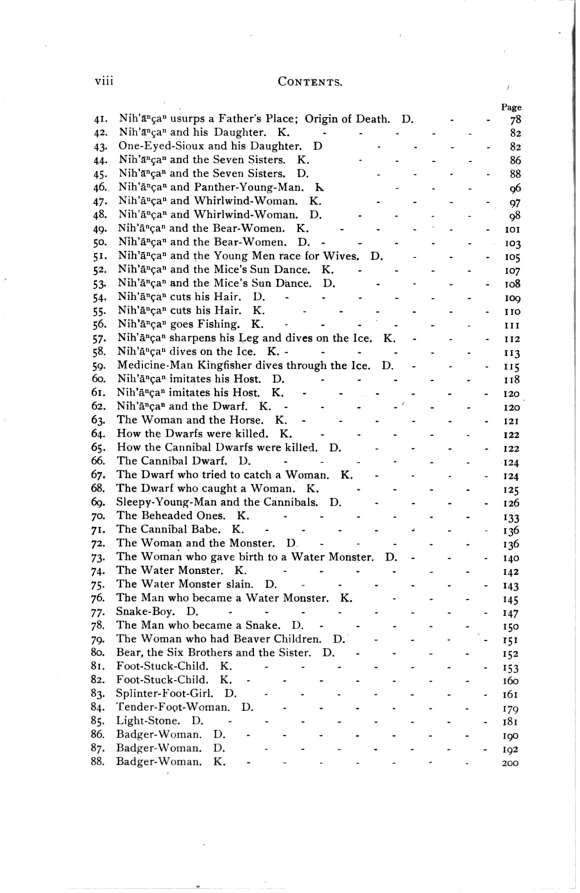
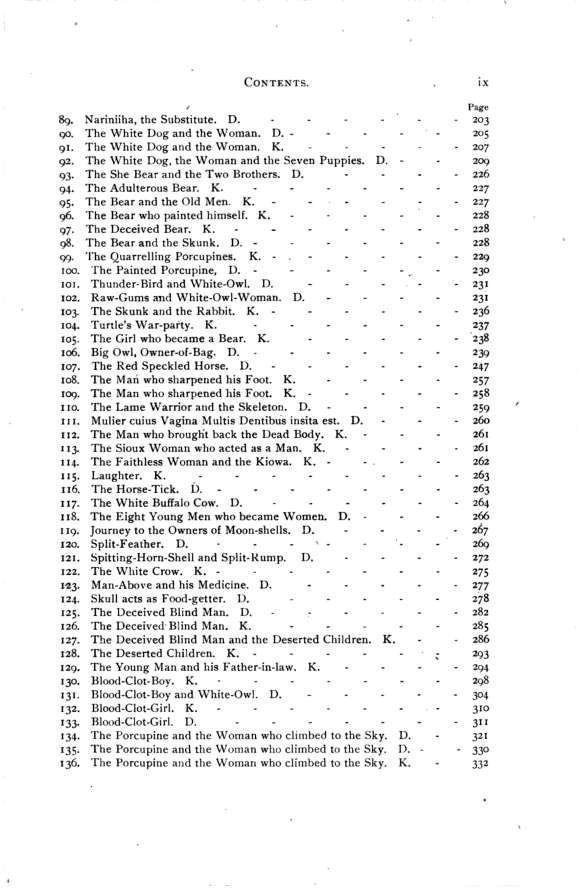
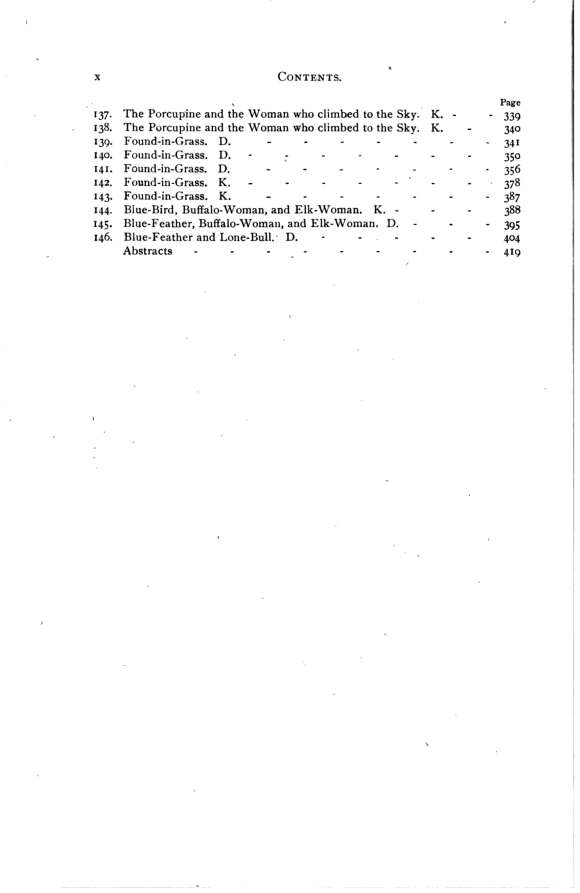
TRADITIONS OF THE ARAPAHO.
i. Origin Myth (fragmentary).
In the first place there was nothing but water, except the waterfowls ; and the Grandfather saw that there was a Father [flat pipe] of the Indians floating on the water, on the four sticks (tripod). Knowing that that person floating on the water was fasting and weeping and crying, and seeing that he was really fasting for the good, the Grandfather took mercy on him. So the Father floating on the water, and who was fasting on this tripod, called all the water-fowls, and so they all came.
"Now," says this man, "I want some of you who can do the work of diving to come and search for the bottom of the sea and see if you can find dirt." So they all came in rotation according to their size. And they dived and came out dead. It took some days for these birds to dive. Finally it was the turn of the duck, who was somewhat timid about doing this work, and he said, "I guess I will try my luck and see if I can do this work.'' So the duck dived and was a few days and nights under the water, and the Father who was on the tripod was anxiously watching to see the return of the duck, and the time came and he saw the sign of its return on the surface of the water as though the duck was coming. And as the duck came out of the surface of the water (his feet closed the moment he barely reached the bottom) it had mud stuck to its claws. The Father took it and cleaned its feet, and the mud that was on its feet he put on- his pipe. Still it was not satisfactory. There was not enough to do good. So the turtle came swimming toward the tripod and said, "I am going to try too.'1 So he went' down and down days and nights, for a. long time. Toward the last the man saw the bubbles coming up. The circles of water began to form and the turtle came up with his feet closed together. The Father took him and stretched his legs apart and took the mud off from the four feet. And these were the two animals that did the work in diving to the bottom of the sea to get the clay. The Father took the clay and put it with the other and spread it out thin and then he dried it. As soon as the clay was dry he went to work and just took a piece of this clay and blew it toward the northeast, and then toward the southeast and then toward the northwest and then toward the southwest, and what was left he took and gave it a swing and commanded that the earth come. Then he took a rod and made different motions over the waters for the rivers. Where the dirt was the thickest he caused mountains.
After the earth was made, there was nothing to grow. It was barren. This man then says, "I have to have servants to watch and to dig the earth." So the Father made the sun and moon, to represent man and woman. After this, he said, "Before I do more I have got to make a man and to make a woman to inhabit this earth to represent the sun and the moon." So he went to work to make clay images of those two people, man and woman. So he made them out of clay. There they were in clay. The sun causes the trees, the grass and the vegetation to grow. After the sun and moon had been made and these two people, he caused the trees and the grass and vegetation and the anithals and beasts and birds to live.
Then these two people, man and woman, were identical. This man and woman were virtuous at that time. There was nothing of connection at that time. It was commanded that there be a day and night, seasons of the year and that there should be summer and winter, fhat the grass be new one season and old one season. When the command was made that there were to be lodges, the Willow lodge was commanded to be, and also other lodgesthe Thunder-bird. Club- Board, Buffalo Women's, Sweat lodge, Lime-Crazy, Dog-Soldier and the Old Men's lodge. The oldest one was the Sweat lodge.
Man was now asked, "Where are you going to place yourself?" After thinking, of it some time he left it entirely with the Father, and they were left just the way they were, and time passed on and on, and all the fruits grew. Then the Father said for male and female beasts of every description and fowls, genital organs shall be located, but for the human beingschoice how they shall be locatedthat shall be decided later on.
Then the Father told this man and woman that all the lodges or commands laid down for them should be made up of birds, beasts, and the different kinds of paints and fruits and that the animals should never be worthy to belong to any of these lodges.D.
Told by Hawkan. See also Nos. i and a. A much more extended and detailed Origin Myth may be found in the author's "Arapaho Sun Dance," Field Columbian Museum. Anthropological Series, Vol. IV. The Flat-Pipe is the trihal "medicine" of the Arapaho, and is in the keeping of Weasel-Bear, in Wyoming. The "official" version of the Arapaho Origin Myth is told only during the performance of rites connected with the Flat-Pipe ceremony. The Flat-Pipe in Arapaho mythology is really the Creator, and is held in greater veneration than the Sun.


